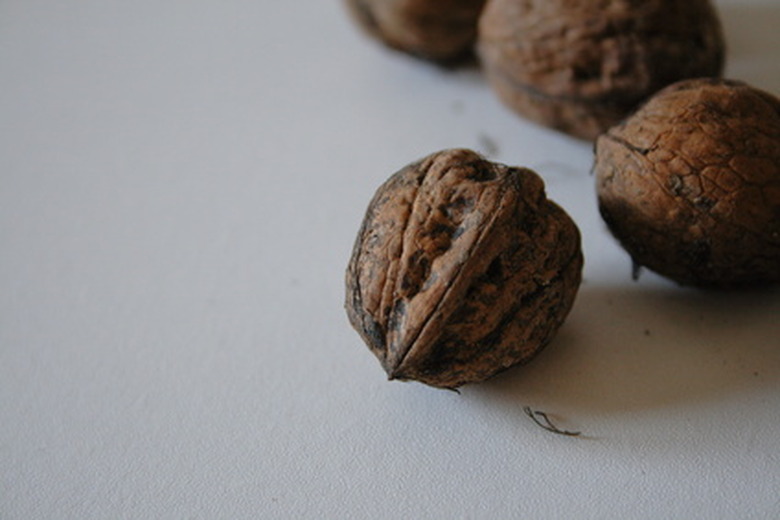Life Cycle Of A Black Walnut
Many types of nut trees supply food for wildlife and human consumption. One type of nut-bearing tree, the black walnut tree, also creates a majestic addition to your landscape design. Black walnut trees grow up to 150 feet tall, providing shade and wind protection. While these trees can grow several stories high, they start their lives in seeds that measure only about an inch in diameter. The life cycle of a black walnut tree encompasses several phases.
Considerations
Certain conditions affect the life cycle of black walnut trees. These trees thrive in areas with plentiful rainfall and temperate climates. The optimum locations for black walnuts to reach their full potential include areas that experience more than 25 inches of precipitation each year and more than 140 frost-free days. Harsh climates and areas of shallow topsoil can stunt the growth of these trees, often limiting their life span.
- Many types of nut trees supply food for wildlife and human consumption.
- Black walnut trees grow up to 150 feet tall, providing shade and wind protection.
Germination
Walnuts that fall in deep, fertile soils have the best chance of sprouting into new trees. Like many types of seeds, black walnuts require a period of stratification. This cold treatment requires at least 20 days in a temperature between 34 and 41 degrees F. Planting these nuts in about 2 inches of well-drained soil encourages them to sprout in about five weeks. With sunlight, warmth, soil nutrients and even moisture, these seeds begin to grow into new trees.
Growth
During the first year of growth, black walnut trees often reach a height between 3 and 5 feet tall. These trees continue to grow taller each year, forming new side branches and compound leaflets. Roots continue to spread beneath the surface of the soil, often reaching a distance around 55 feet from the trunk.
- Walnuts that fall in deep, fertile soils have the best chance of sprouting into new trees.
- During the first year of growth, black walnut trees often reach a height between 3 and 5 feet tall.
Reproduction
Black walnut trees have small clusters of tiny, green blossoms early in the spring. Small seeds appear after the blossoms wilt. These seeds appear as round, green orbs among the leaflets. As the soft, fuzzy nuts mature, they begin to turn dark and form a hard covering, known as the shell. The nuts dry on the branches, falling to the ground as the tree enters its dormant stage. Squirrels and small rodents may transport these seeds to other locations, causing the black walnuts to form groves and forests.
Death
Like all plants, the black walnut tree eventually reaches the end of its lifespan and dies. While poor soil, pest and disease infestations, and human intervention often reduce the natural growth of these trees, these specimens may live to a ripe age of more than 200 years. Dying trees often contain bare branches and hollow areas within their trunks.
- Black walnut trees have small clusters of tiny, green blossoms early in the spring.
- The nuts dry on the branches, falling to the ground as the tree enters its dormant stage.
